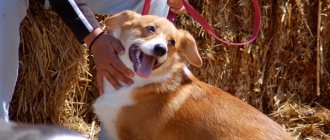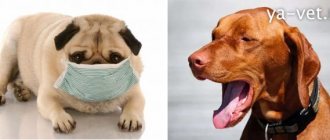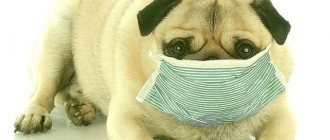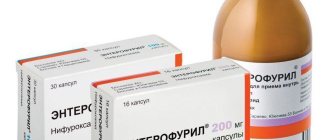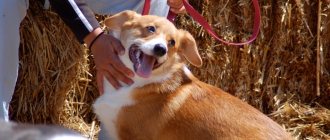A pet can choke for a variety of reasons. Let's look at what to do when a dog coughs as if he's choking and is trying to regurgitate something. By coughing, the dog tries to clear the airways. Sometimes it appears for no apparent reason, which indicates health problems. It is important to distinguish an alarming symptom from a natural reaction.
You should conduct an examination with a doctor in order to identify the pathology in time. Often this indicates colds, because the immune system does not always cope with pathologies. They occur due to hypothermia while walking or after swimming. Often the cause is infection with helminths and hereditary diseases. Your pet may experience discomfort if the collar is not worn correctly.
Symptoms of illness
Any disease has characteristic features, according to which the veterinarian makes an accurate diagnosis. Dangerous to the health of the animal is a severe, constant cough, which is combined with the secretion of foam, saliva and is expectorant in nature. The pet sticks out its tongue and makes movements as if expelling a foreign object from its throat.
Most often, such a cough is a signal of some kind of illness or injury. The accompanying signs confirming the pathology include the following options:
- The pet burps, and at the same time a copious discharge of mucus from the nose or foam from the mouth begins.
- The animal begins to rapidly lose weight. There is practically no appetite.
- Activity decreases to almost zero. The pet is depressed, tries to hide, does not want to go for a walk.
- The dog breathes unevenly even with slight physical exertion.
- The four-legged wheezes heavily and sneezes frequently.
- The gums bleed and sores appear on them.
- The temperature rises, chills and trembling appear.
If these symptoms occur, you should be seriously concerned: most likely, the dog is getting sick. He needs to be taken to a veterinary hospital and tested.
Cough caused by the presence of parasites
No less dangerous is a cough as if the dog is choking and cannot clear its throat. What to do with such a symptom is not always clear, because often the cause of such a cough is the existence of worms in the arteries of the heart. This phenomenon is called “dirofilariasis” and is manifested by the following symptoms:
- shortness of breath;
- fainting;
- severe hoarse cough;
- swelling of the animal's limbs.
Home therapy cannot get rid of parasites, so you need to visit a doctor and follow his recommendations.
Causes of pathology
Many dog breeders believe that an expectorant cough is a common cold. Sometimes this is true, but there are many other reasons for feeling unwell that are much more serious.
Foreign body
It often happens that your four-legged friend not only coughs, but also wheezes, and bloody foam comes out of his mouth. Most likely, we are talking about a foreign body getting into the pharynx or esophagus - it could be a toy, a piece of dry food or a splinter of bone. The main signs of foreign object penetration are:
- trying to burp;
- vomiting bloody foam;
- sneezing;
- secretion of saliva mixed with blood;
- refusal of food and water;
- the appearance of foam from the nose.
A collar that is too tight can cause similar symptoms. If after removing it the dog does not feel better, it is necessary to urgently contact a veterinary clinic or provide first aid.
Infection
Infection is one of the most common causes of expectorant cough. Usually suffocation is characteristic of the enclosure type or tracheobronchitis.
The main feature of viral tracheobronchitis is the attempt of a four-legged friend to regurgitate or cough something up. After some time, the animal begins to vomit white foam. What treatment will the veterinarian prescribe:
- For drug therapy, a course of antibiotics is prescribed in the form of injections.
- The trachea, reddened from tension, is treated with cough medicines: sprays, suspensions.
- Inflamed tonsils and dry cough are softened with expectorant drugs.
- Communication with other residents of the apartment is kept to a minimum to prevent the spread of infection.
A sick pet should be given food that is easy to swallow and does not scratch or irritate the throat. Dry food is replaced with wet food or the dog is switched to natural food. It can be soup, thin porridge, broth with the addition of pureed vegetables and meat. We must not forget about clean drinking water at room temperature.
Other infections give rise to a cough of a different nature, but they should not be completely ruled out either.
Allergic reactions
Seasonal allergies are not the last thing that can provoke a four-legged reaction. Bites from blood-sucking insects also cause a negative response from the body. In dry weather, allergies are provoked by dust, suspended harmful substances, and emissions in industrial cities.
Some foods can be dangerous to the dog's health - then the doctor speaks about the presence of food allergies and gives recommendations on proper nutrition.
The main symptoms of an allergic reaction:
- characteristic cough;
- increased tearfulness;
- redness of the eyeballs;
- frequent sneezing;
- skin rashes and itching.
Diagnosing ailment and prescribing an antihistamine is not enough - it is necessary to detect and eliminate the allergen. First of all, veterinarians will recommend changing the diet, hiding household chemicals away and using maintenance medications.
Parasitosis
It has been proven that parasite infection most often occurs in puppies or adults living in unsanitary and crowded conditions. In the vast majority of cases, cough is caused by worms living in the lungs or pericardial space.
Signs of pathology caused by helminths are:
- severe suffocation when lying down;
- sudden weight loss;
- fast fatiguability;
- difficulty swallowing;
- periodic convulsions and photophobia;
- deterioration in appearance - the coat becomes dull, the eyes lose their vibrancy and shine.
Parasites enter the lungs along with the blood. A large number of helminths cause various types of inflammatory processes. Veterinarians say that it is easier to prevent infection and spread of parasites with preventive measures than to engage in long-term treatment in the future.
Heart dysfunction
Disturbances in the functioning of the mitral valve provoke the so-called cardiac cough. Large breeds are susceptible to dilated cardiomyopathy. Vivid manifestations of dysfunction of the cardiovascular system are:
- accumulation of fluid in the abdominal cavity;
- bluish gum color;
- decreased physical activity;
- severe wheezing.
Any heart disease can be fatal. Therefore, to make an accurate diagnosis, it is not enough for the doctor to simply examine the patient and question the owner: an ECG and ultrasound of individual body systems are prescribed, and then multi-level treatment is carried out.
Oncology
Elderly individuals with weakened immune systems are susceptible to cancer. In puppies and middle-aged animals, the appearance of malignant or benign neoplasms is not very common. Oncology can reveal itself by coughing with blood and sputum, as well as a feverish state.
Eliminating symptoms is not enough to stop the development and spread of the tumor. Surgical intervention is possible if previously taken measures did not have a positive effect.
Respiratory diseases
Almost any problem with the lungs, bronchi or trachea will cause a cough with the urge to hawk. It is quite difficult to carry out diagnostics at home: only veterinarians in the clinic do this. There can be many reasons: from a small foreign object getting stuck to serious inflammation or infection.
Cough as an allergic reaction
A dog, like a person, often suffers from allergies, which can provoke a cough. Common causes of allergic cough include:
- Eating food with ingredients that are not tolerated by the dog’s body.
- Seasonal allergies.
- Selection of incorrect treatment and low-quality medications.
To eliminate this phenomenon, you need to determine the root cause of the cough and eliminate it: give up unsuitable medications, switch to high-quality food, give your pet a remedy for seasonal allergies, following the instructions of a specialist.
As you can see, coughing in dogs occurs due to a variety of conditions in the pet’s body. And if you cannot independently determine the cause of this phenomenon, then you can always go to a professional.
Treatment of expectorant cough in dogs
If the dog has a cough, as if it is choking, treatment is strictly under the supervision of a specialist. A critical situation requires a quick visit to the clinic. There the doctor will do everything necessary:
- The specialist will be able to remove the foreign object using thin and long tweezers and, if necessary, apply anesthesia.
- Bronchitis, tracheobronchitis or pneumonia require the prescription of anti-inflammatory drugs, a course of antibiotics, immune-supporting drugs and complete calm.
- Infection of the lungs with worms is diagnosed using tests. The doctor prescribes anthelmintics for a specific type of parasite.
- Heart failure, which is accompanied by wheezing sounds, is eliminated with sedatives and strengthening drugs. In addition, the doctor prescribes diuretics, special nutrition, and limited physical activity.
- Viral infections are treated with strong antibiotics, anti-inflammatory drugs and immunostimulants.
- Allergic reactions are controlled by the use of medications that relieve symptoms. A special diet and elimination of the allergen will completely help cure the disease.
If your pet chokes, seconds count. Therefore, the owner must provide first aid to the pet himself.
What to do if your dog can't clear his throat?
If your pet coughs a little and there are no other signs of pathology or changes in behavior, you should not worry. It's worth watching him for a day. If additional signs appear, such as fever, weakness, apathy and shortness of breath, it is worth taking him to the clinic.
The veterinarian will conduct an examination, diagnose the disease and prescribe treatment. Do not ignore a serious situation and go to the pharmacy for medicine without a prescription. Such behavior can be fatal for your pet, because it is impossible to diagnose the disease yourself.
In case of an attack of suffocation, you should act as follows:
- The small dog needs to be turned upside down, shaken (almost like a blanket), and patted on the back.
- When a reverse sneezing attack occurs, your pet needs to swallow saliva or take a deep breath. It is important for the owner to help the dog by pinching its nostrils or stroking its throat.
- A large animal will need to be brought to a standing position, its rear end raised slightly and the sternum firmly patted. If possible, you can carry out manipulations as with a small dog.
- It is necessary to ensure that during an attack the pet does not choke on its own tongue.
- If your pet has a short muzzle, you should place a finger in the mouth and check the opening of the airways. Representatives of the breeds often have a long and soft palate. Because of this, the airways are blocked.
- Stopping breathing requires resuscitation. Closed heart massage and ventilation are performed.
Video: what to do if your dog coughs as if he’s choking and is trying to burp something?
Actions in case of suffocation
If the animal is choking and suffocating, the dog owner must use one of the special techniques. You also need to know the list of prohibited actions:
- Don't hit your dog on the back. This is an ineffective and dangerous method, due to which the choking object may fall deeper into the trachea, which will aggravate the situation. Animals of small breeds should not be hit on the back, because the thin spine is very easy to damage.
- Do not pour vegetable oil down your throat. It will not help the foreign object slip out, and the owner will lose valuable time saving the pet.
The main thing is not to panic, not to scream. This will worry the pet even more: it may not give in to help. You need to calm down, gently but firmly take your pet and take actions to help save his life:
- Use the gravity of the earth. The four-legged friend must be taken by the hind limbs and lifted slightly. Small rocks can even be lifted off the ground by holding them head down. To avoid damaging the spine, you should hold the dog by the neck. A large or medium-sized dog only needs to be lifted slightly. The foreign object should fall out of the throat on its own - if it does not sink deeply.
- The Heimlich maneuver, used for humans and animals. The pet is grabbed from the back at the waist. Then they find the place where the ribs end and the stomach is located. A folded fist is placed there, another hand is placed on top, then rhythmically squeezed upward. Due to the contraction of the esophagus and trachea, the object will pop out. Don't press too hard to avoid breaking the ribs. You need to be extremely careful with small breeds.
- Removing a foreign object manually. The dog's mouth is opened, it is firmly fixed and, illuminated with a flashlight, a foreign body is discovered. The next step is to remove it with tweezers or your fingers. The main task is not to injure the mucous membrane of the throat or palate.
If the dog has lost consciousness, resuscitation measures are carried out. They involve pressing on the chest in a certain rhythm: 15 rhythms per 1 breath. The rescued and calmed pet is taken to the veterinarian. Knowing first aid techniques can help save your pet's life.
When do you need to go to the vet urgently?
When no manipulations produce results, and the stuck foreign body cannot be removed, then it is necessary to go to the doctor without delay, if it is not possible to call him at home. It is also worth doing if the cause is not something swallowed, but the dog is wheezing and choking. And even if you managed to remove what your pet choked on, this does not guarantee that there is no other, smaller object inside or damage to the larynx. Therefore, the animal should definitely be taken to a veterinarian for examination and ultrasound.
How is the feeling of a lump in the throat treated?
Treatment is determined by the causes and mechanism of development of the disease and is selected individually for each patient.
For a recent and non-severe condition
treatment is carried out on an outpatient basis: the doctor conducts a psychotherapeutic session, prescribes medications that the patient takes at home and periodically comes for follow-up consultations.
For moderate severity
- treatment in a day hospital is recommended: daily treatment procedures are carried out (drug infusions, physiotherapy, etc.), which take an hour and a half, but the patient lives at home and goes about his usual business. The average course of a day hospital is about 10 days.
In severe condition
hospitalization in a hospital is recommended. Due to intensive treatment, the condition can be stabilized already in the first hours of stay. The average length of hospital stay is 10 days (from 5 to 30 days depending on the severity of the condition and the body’s recovery abilities).
Main methods of treatment:
- Psychotherapy.
- Drug treatment (pharmacotherapy).
- Physiotherapy.
- Massage and manual therapy.
- Diet therapy.
- Biofeedback therapy.
